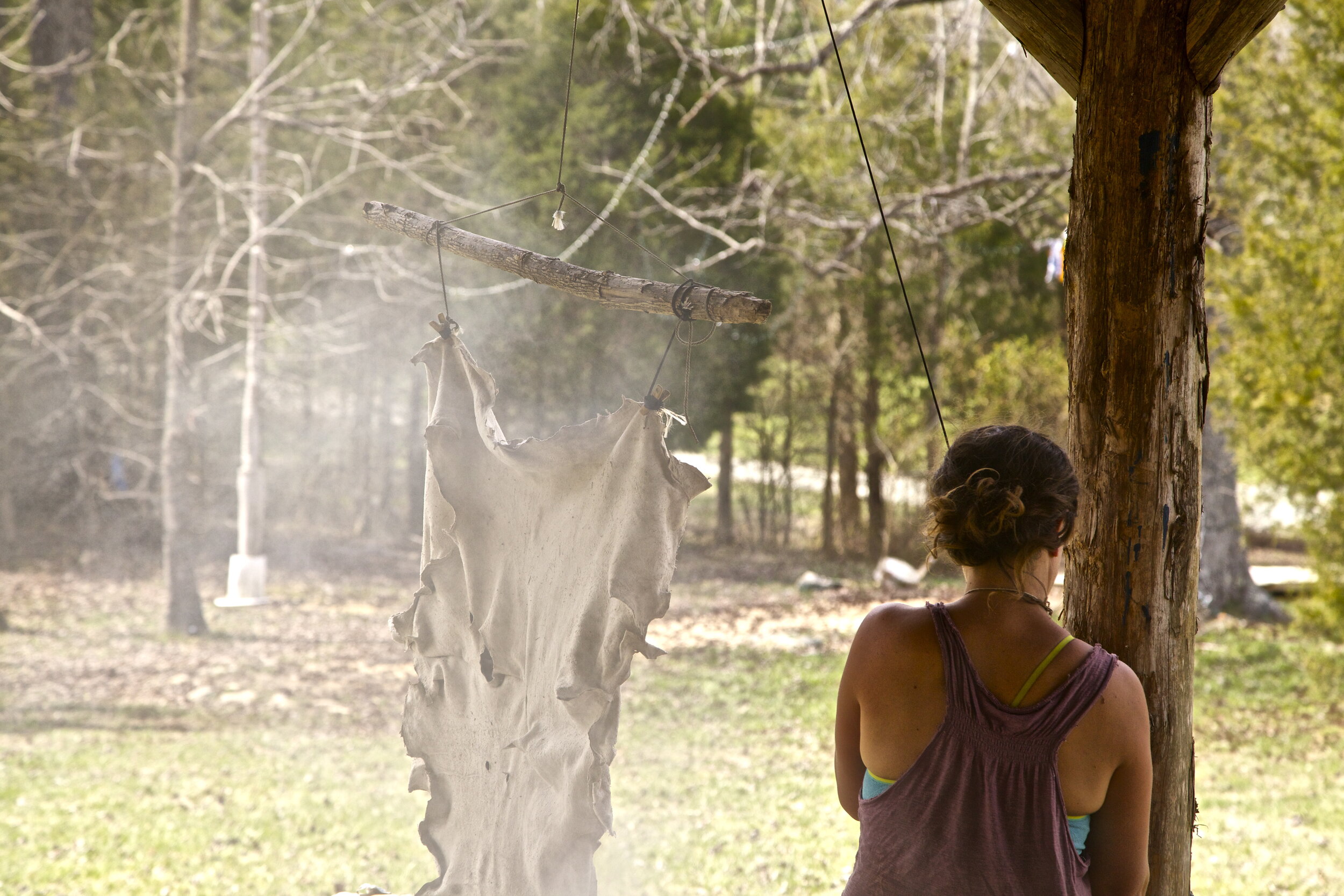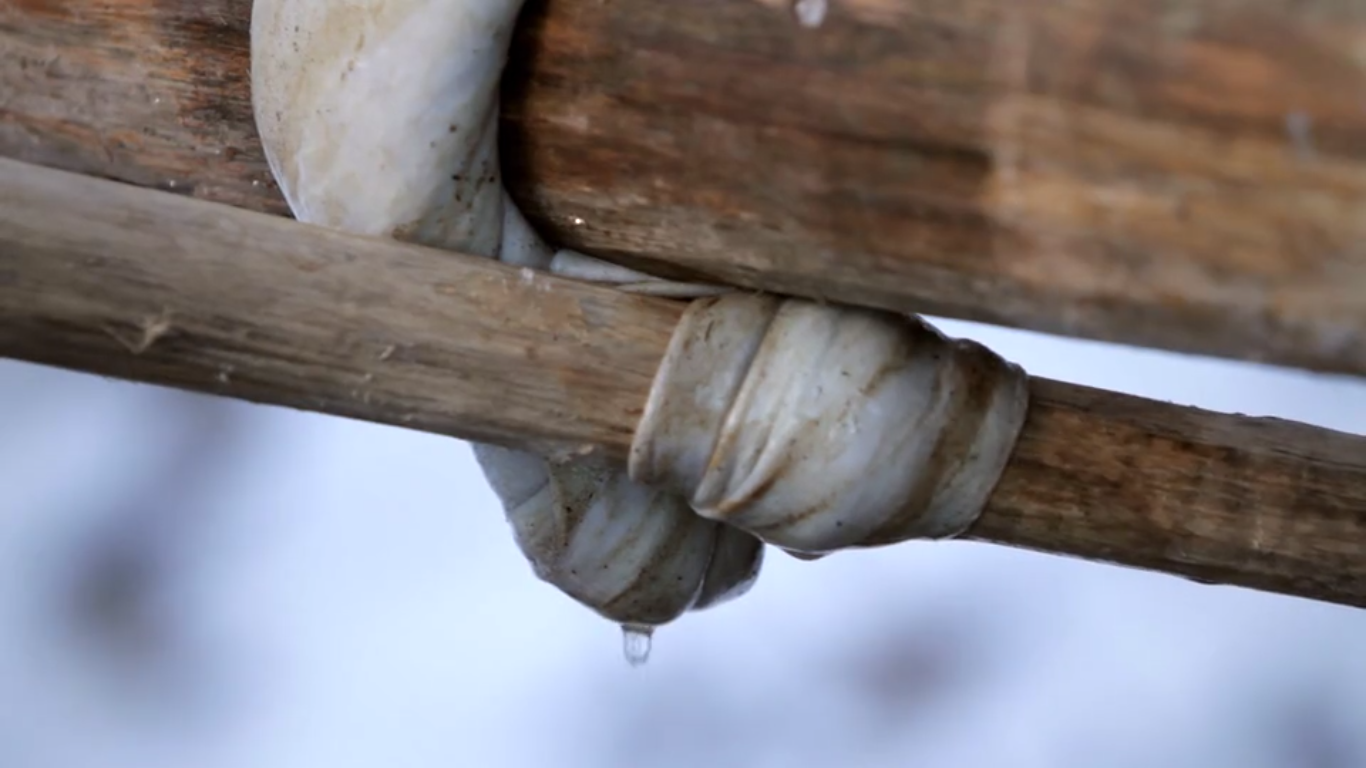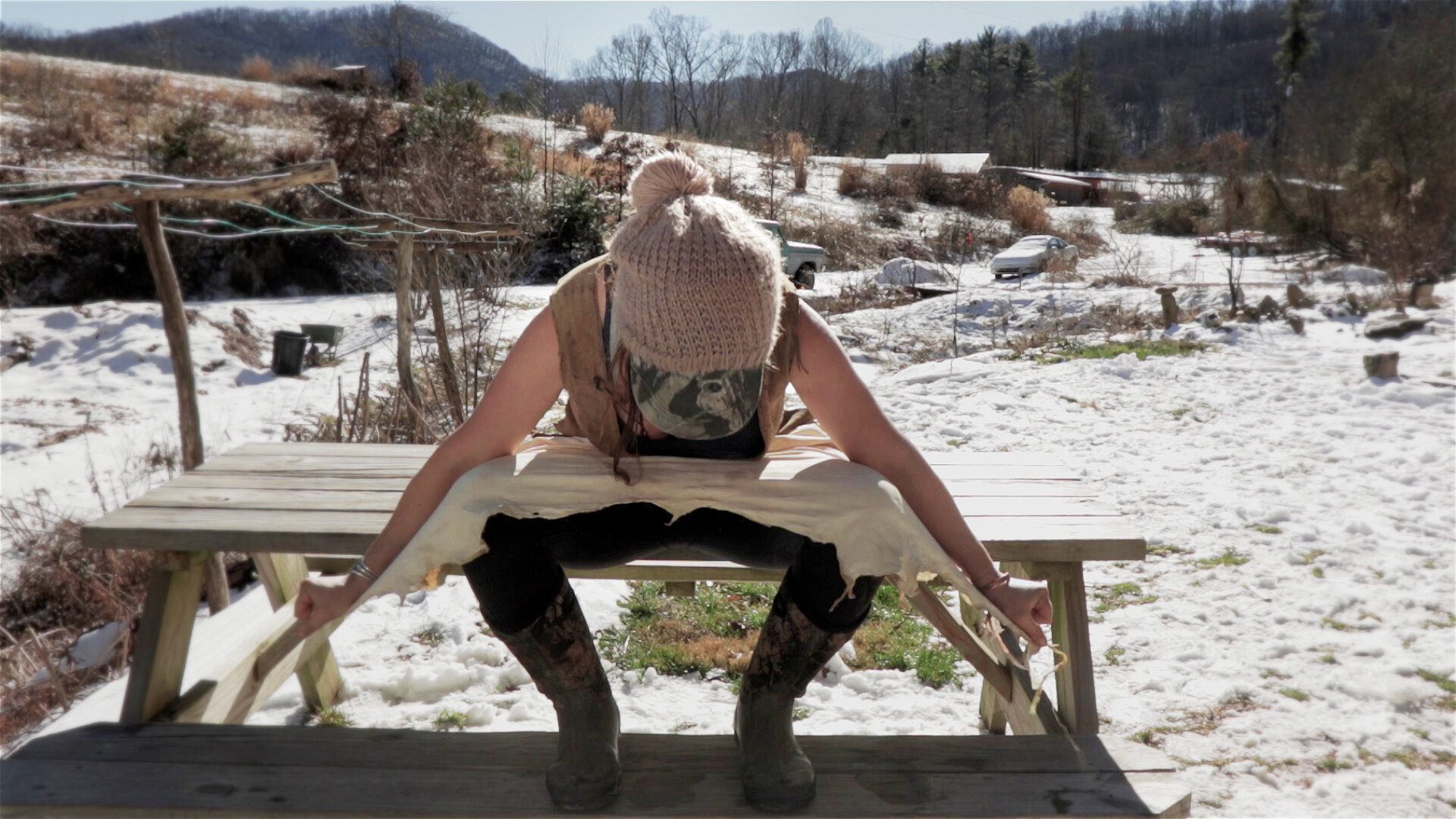Hey guys, Justin here. We are really picky about who we choose to partner with, in fact we turn away most offers we get because they don’t seem helpful to the people who read this blog. That said, Wild Abundance reached out to partner with us and we found their material to be both very helpful and a good compliment to what we teach here. Below is an article written by Chloe from Wild Abundance.
The Basic Process of Making Leather
The general process of making leather involves these basic steps:
Removing the skin from the animal
Removing the flesh from the skin
Soaking the skin to loosen the hair
Scraping or abrading to remove the hair
Removing some of the layers of the skin (for some methods only)
Coating the collagen (protein) fibers in the skin with a tanning agent
Softening
There are lots of different techniques for making leather, as developed all around the world. Today, most commercial leather is made using chemical tanning agents, but originally, the process was all natural. Traditional tanning can be loosely broken down into two categories, and these methods result in very different kinds of leather.
Tanning with Tannins a.k.a. “Bark Tanning”
The term “tanning” comes from the word tannin, which is a type of acidic compound found in many plants – tan oak leaves, hemlock bark, grape leaves, black tea, etc. During bark tanning, these plant-based tannins bind with the main protein in animal skins, collagen, so that it becomes more stable and won’t break down. If you’ve ever happened upon a roadkill deer that’s been there for a while, surely you’ve noticed that untanned animal skins decompose fairly easily.
Tanning a hide like this involves soaking it in a tannin-rich solution for many weeks, or even months for larger hides. It also requires collecting a whole lot of plant material and steeping giant pots of tea to do the soaking.
The leather that results from bark tanning has a smooth, almost shiny side, and a fuzzier underside. It’s relatively stiff, water resistant, and is usually a dark color, since tannins are also a dying agent. This stuff is great for shoes, bags, belts, etc., and less ideal for clothing. The process of bark tanning is similar to the process of making commercial leather today. However, very few tanneries actually use plant-based tannins anymore; some of the most common chemical tanning agents include chromium and aldehyde.
Tanning with Fat, Lecithin, and Smoke, a.k.a “Brain Tanning”
Another natural and ancient method of hide tanning is known as brain tanning. This one involves using fat and lecithin to coat the collagen fibers, instead of using acidic plant tannins. One good source of both fat and lecithin are brains. Somewhat magically, one deer brain usually provides exactly enough of these compounds to tan one deer hide. In the absence of brains, people make brain-tanned leather using oil, lard, tallow, or even butter for the fat, and usually eggs for the lecithin.
Instead of weeks or months of soaking, brain tanning relies on physical stretching and rubbing to get the “tanning” solution to penetrate the hide. Afterward, the hide is bathed in woodsmoke to lock in the solution and ensure that it won’t wash out when exposed to water.
Another difference between these methods is that with brain tanning, the outer layer of skin is scraped off. This layer is called the grain, and it’s where the hair grows. As a result, the finished product is soft on both sides and feels more like suede or buckskin. In fact, the term “buckskin” comes from leather made in this manner, so brain-tanned leather is true, authentic buckskin (even if it’s made of a goat or doe hide).
True buckskin is soft and supple, a tawny color, breathable, and very strong. It’s great for clothing, because it conforms to the shape of the body, and stretches slightly with movement. Since it’s so strong, you can actually cut lengths of thong from it and sew a bag or dress or pants (or whatever you want to make) using no other materials. Finally, for you beaders out there, true buckskin can be adorned with beads without poking your needle all the way through. Your beadwork will stay firmly attached, since the leather’s integrity has been maintained through the natural tanning process.
Making your own leather
One great thing about both of these natural methods of making leather is that you can do them yourself. Of course, you’ll need to get your hands on a fresh or dried animal hide, but that’s actually easier than you might think. Hunters and animal processing facilities often discard hides, and are happy to give them away for free or a nominal fee. Leather making requires some skill, time, and a space to work, but can be extremely rewarding, especially for leatherworkers. We already love the craftsmanship and creativity that goes into making cool stuff out of leather; making the leather to work with takes it all a step further.
If you’re interested in giving it a try, check out this extremely comprehensive and beautifully produced course on Hide Tanning from our friends at Wild Abundance. It walks you through every step in the brain tanning process, so you can make soft, supple, durable, true buckskin for all your leatherworking projects. They’re there to answer your questions and guide you on your way, if you ever get tripped up. In fact, they’ll even mail you a dried deer hide to get started, if you need one.
We’re excited to be an affiliate for this course, which means that Gold Bark Leather receives a portion of any sign-ups through our channels.



